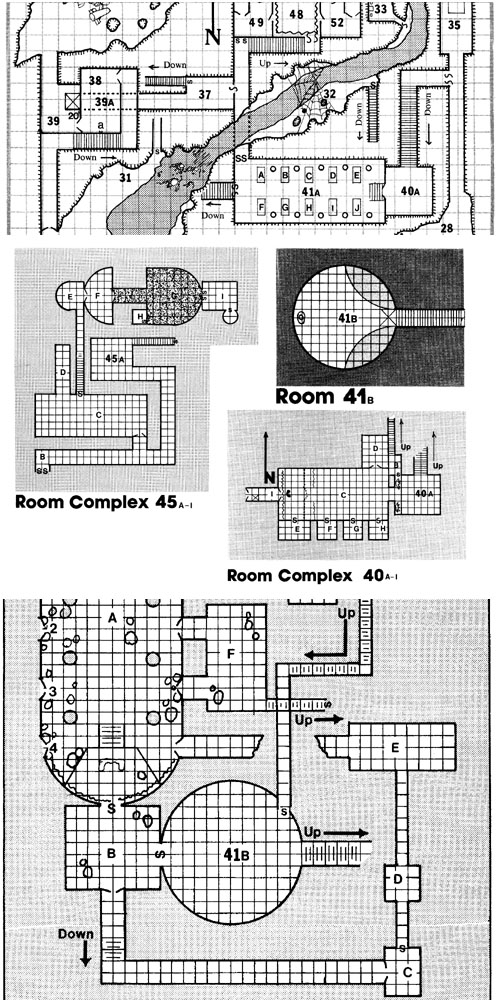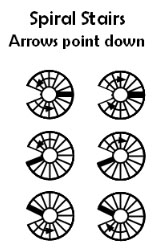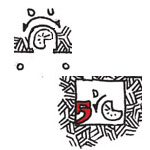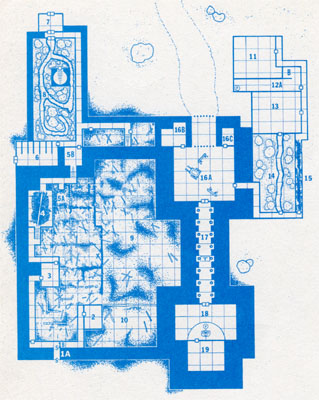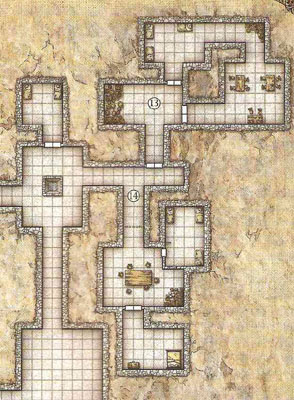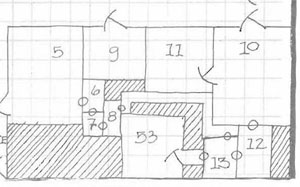As we continue our Better Dungeon Maps project, let’s turn our attention to stairs. And basically, when it comes to stairs, there are two pieces of information we want encoded on the map: First, the direction the stairs are going (up or down). Second, where the stairs are going.
Let’s start by demonstrating the potential pitfalls of not encoding this information. I’ve often sung the praises of Jennell Jaquay’s Caverns of Thracia here before, but this is one place where it falls down painfully. Here’s a sample of maps from the module:
(click for larger image)
All of these maps connect to each other, but I doubt you’ll be able to puzzle out how those connections actually work. (Frustratingly, even the dungeon key won’t help you much.) When I was first prepping the module I spent the better part of half an hour trying to figure out which stairs connected to each other and then marked those connections on the map.
You can easily note, however, that the maps for the Caverns of Thracia clearly indicate up/down directions for the stairs. But it should be relatively easy to imagine what would happen if you removed those text labels, leaving you with undistinguished and enigmatical lines to puzzle over.
Fortunately, the problem of indicating directionality for common stairs is largely a solved one:
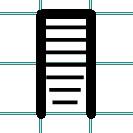
The stairs taper in the direction of descent. (So the lowest portion of the stairs is located at the bottom of the picture above.)
But adventure modules are still maddeningly inconsistent when it comes to clearly indicating where the stairs go, despite the fact that doing so is so utterly trivial:
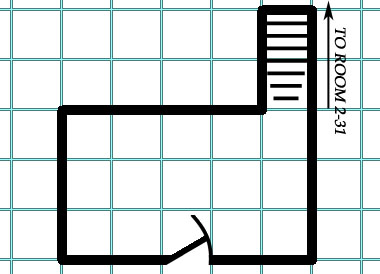
For example, Keep on the Shadowfell indicates the destination of only one-third of the stairs on its maps.
(Another option I’ve seen is to key the stairs: So that Staircase A on Map 1 logically leads to Staircase A on Map 2. This can work. But since it’s usually just as easy to label the destination, as shown above, it’s probably the better option.)
SPIRAL STAIRCASES
Spiral staircases, however, aren’t quite so straight-forward. Here’s a typical example from I6 Castle Ravenloft:
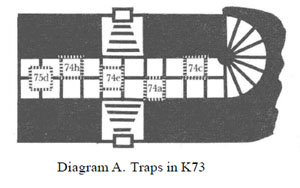
It would be easy enough to supply a destination label for those stairs, but there’s really no way to tell whether they’re curving up or down.
Roger the GS has recently proposed this solution:
Which seems like a good stab in the right direction. My only quibble with this is that it is not immediately apparent at a glance which direction the arrows are pointing. (They could just as easily be indicating the direction in which the stairs are ascending.)
It’s tempting to apply the same tapering solution we use for straight stairs to the problem. To my eye, something like this looks fairly acceptable:
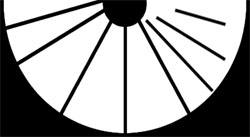
Even when extended to a three-quarters design, the iconography seems to remain fairly clear:
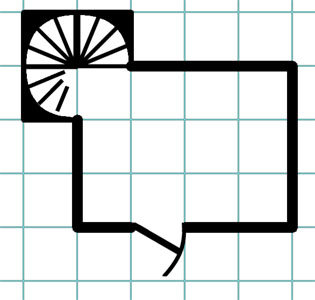
But when you need to show the stair case spiraling both up and down from the same level, the result is considerably less satisfying:
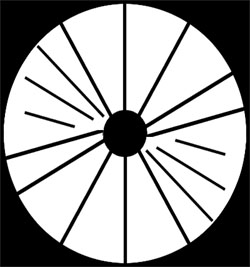
Hypothetically you could only have it taper at the absolute nadir of the stairs as pictured, but even with tweaking this seems very unclear to my eyes:
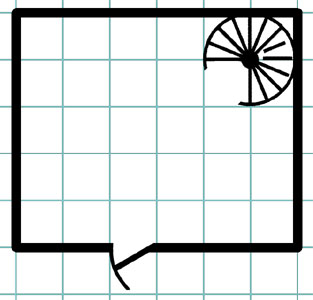
I’m increasingly convinced that labeled arrows may be the clearest way to go with spiral staircases. But do the arrows necessarily need to curve just because the stairs do?
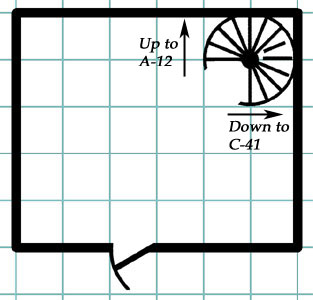
Here the double visual coding of the symbol (somewhat unclear on its own) in combination with the arrows seems, to my eye at least, to have greater clarity than either by itself.
On the other hand, here’s a final example from Dyson Logos’ Ruins of the Gorgon:
Dyson uses a side-view map to make the destination of each stair relatively clear. (Although double-coding the info with a text reference could only add to clarity.)
At the end of the day, I still feel fairly stymied when it comes to providing a nice, clear icongraphy for spiral stairs. Your thoughts?
This post is part of the RPG Blog Carnival for Cartography.

